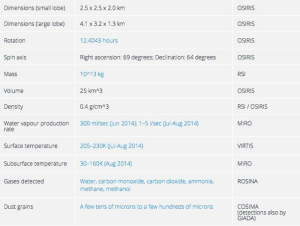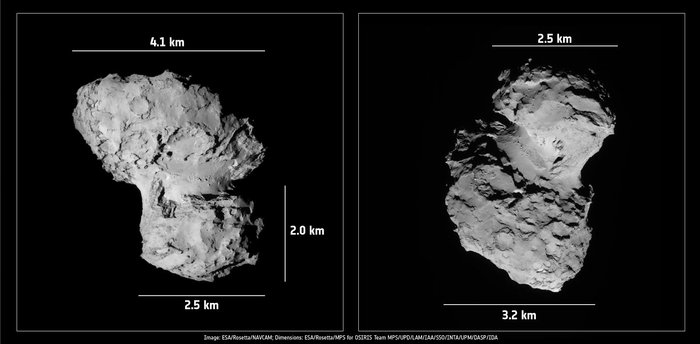While the majority of the world’s population attempts to survive this thing called life, focusing on the pursuit of day-to-day activities, the larger cosmic meaning underlying the grand scheme of things continues to elude us. Somehow, when we send a robotic space probe out into the Solar System to chase after a comet, a chord is struck that makes me wonder, “Why?” It still seems necessary, though, that the European Space Agency (ESA) launched its Rosetta probe in March, 2004 to make an epic journey to deploy the Philae lander on the 67P/Churyumov–Gerasimenko comet, currently wrapped up in Jupiter’s orbit.
And, now that the ESA has made the comet into a 3D printable model, that existential conundrum is brought that much closer to home. You can 3D print it and hold it in your hand and wonder… How was it made? Well, the ESA created a rendering from the Rosetta‘s OSIRIS and NAVCAM cameras. The comet isn’t fully detailed, as the dark sides are occluded from the light of the sun. As the Rosetta entered orbit around 67P/C-G on September 10, 2014, it’s been able to pick some details about the rock, its rough size among other things, but, the space agency says in a blog post:
Because roughly 30% of the ‘dark side’ of 67P/C-G has not been resolved and analysed fully yet, the shape model is very incomplete over those regions. As a result, some of the derived parameters for the comet are only best estimates at present. These include the volume and the global density, the latter depending on the mass and the volume.
As the comet moves closer to the sun, they’ll be able to give a bit more detail about it and, perhaps, an even more refined 3D printable model. When the Philae lander is deployed on November 12, with an estimated 75% chance of success, the ESA will be able to learn even more about 67P/C-G, like whether or not anyone can land on it. Paving the way for a potential future of asteroid mining and space exploration, the Rosetta mission could be the first time humanity has made a soft landing on a comet.
You can 3D print the comet and hold it in your hand, now with a superficial answer to your question, but, pondering the 4.6-billion-year-old Solar System as part of the 13.8-billion-year-old Universe, you might wonder, “How was it made?”





